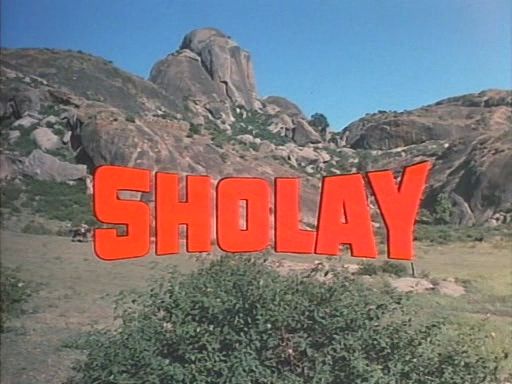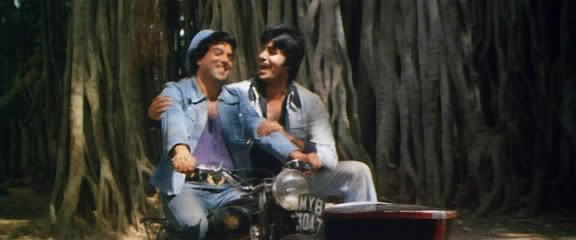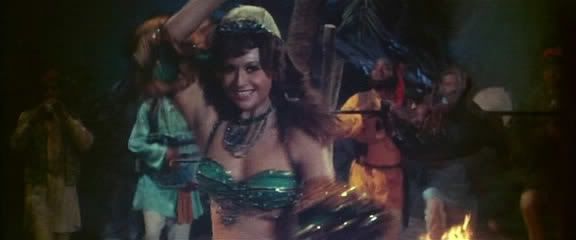
Tonight I am startng to look at the movie Sholay. I saw it over 30 years ago and never did see it again.
I know it is one of the greatest movies put out during that era of Indian Cinema.
NB: Sorry Amral, had to use this:

Replies sorted oldest to newest
g'morningquote:Originally posted by Mitwah:
Yeh Dosti
Great song about friendship....Amitabh Bachan and Dharmendra...









quote:Originally posted by asj:
I love doing this:
.


quote:Originally posted by Riya:quote:Originally posted by asj:
I love doing this:
.
oh, we can tellAnd we so enjoy you doing this

my favouriteeeeeeeeeeeeequote:Originally posted by asj:
.

quote:Originally posted by IK:my favouriteeeeeeeeeeeeequote:Originally posted by asj:
.tnks ASJ for doing all this, i am so going to enjoy this......

quote:Originally posted by asj:
.
quote:Originally posted by asj:quote:Originally posted by IK:my favouriteeeeeeeeeeeeequote:Originally posted by asj:
.tnks ASJ for doing all this, i am so going to enjoy this......

I think the song was "Hey Dosti" IK, It is slowly bringing back the memories.
.








this was one big song back in those days, the 2 of them was excellent n how i had loved them....quote:Originally posted by asj:quote:Originally posted by IK:my favouriteeeeeeeeeeeeequote:Originally posted by asj:
.tnks ASJ for doing all this, i am so going to enjoy this......

I think the song was "Hey Dosti" IK, It is slowly bringing back the memories.
.
i had felt so sorry for him without his arms.quote:Originally posted by asj:
.
this was so funnyyyy..quote:Originally posted by asj:
.
did she ever prattle......but she's lovelyquote:Originally posted by asj:
.
this was the looks that made him a hearthrob then.....quote:Originally posted by asj:
.
quote:Originally posted by IK:
ASJ, wonderful job, remember the two headed coin that Amit had????????
i don't need to watch the movie, i am seeing it here.....just kidding but tnks for doing this, g'night.

quote:so finally i am going to see what all the hype is about
quote:Originally posted by asj:
Sholay 1975

Staring: Dharmendra, Amithabh Bachchan, Hema Malini, Jaya Bhaduri, Sanjeev Kumar and Amjad Khan
Director: Ramesh Sippy
Producer: G. P. Sippy
Music: R. D. Burman
Running time: 198 minutes (DEI/Eros), 204 (Eros/B4U)
Format: NTSC
Video: 1.85:1 non-anamorphic widescreen (DEI/Eros), 4:3 full screen (Eros/B4U)
Sound: Hindi Dolby Digital Surround
Subtitles: English
Year: 1975 (cinema), 1999 (DVD)
DVD: Single sided dual layered
DVD Author: Digital Entertainment Inc (DEI/Eros), Dot Media (Eros/B4U)
DVD Release by: Eros International
.



quote:Originally posted by asj:
Sholay 1975
'Sholay's dialogue has now become colloquial language, part of the way a nation speaks to itself. Single lines, even phrases, taken out of context, can communicate a whole range of meaning and emotion. In canteens across the country, collegians still echo Gabbar when they notice a budding romance: 'Bahut yaarana hai.' The lines come easily to the lips of Indians: 'Jo dar gaya, samjho mar gaya', 'Ai chhammia', 'Arre o Sambha', Kitne aadmi the?', 'Hum angrezon ke zamaane ke jailer hain'.
'Kitne aadmi the?' What kind of man you are?
Very popular dialogue:
.
quote:Originally posted by asj:
One of the three songs is watchable, the other two appears like the video is not there anymore.
quote:The fee was Rs 100 per retake. On a good day, the light boys returned from the day's shooting richer by Rs 2,000.






Access to this requires a premium membership.